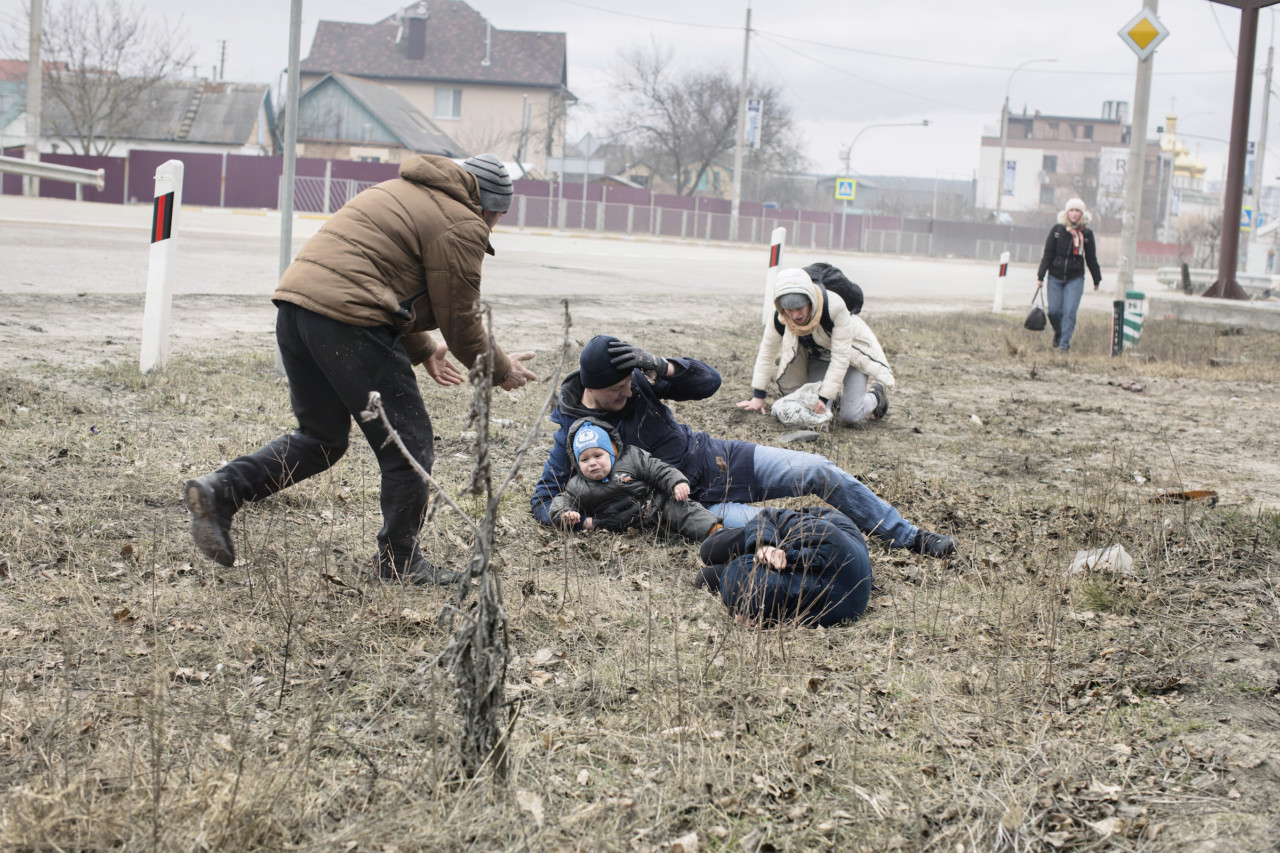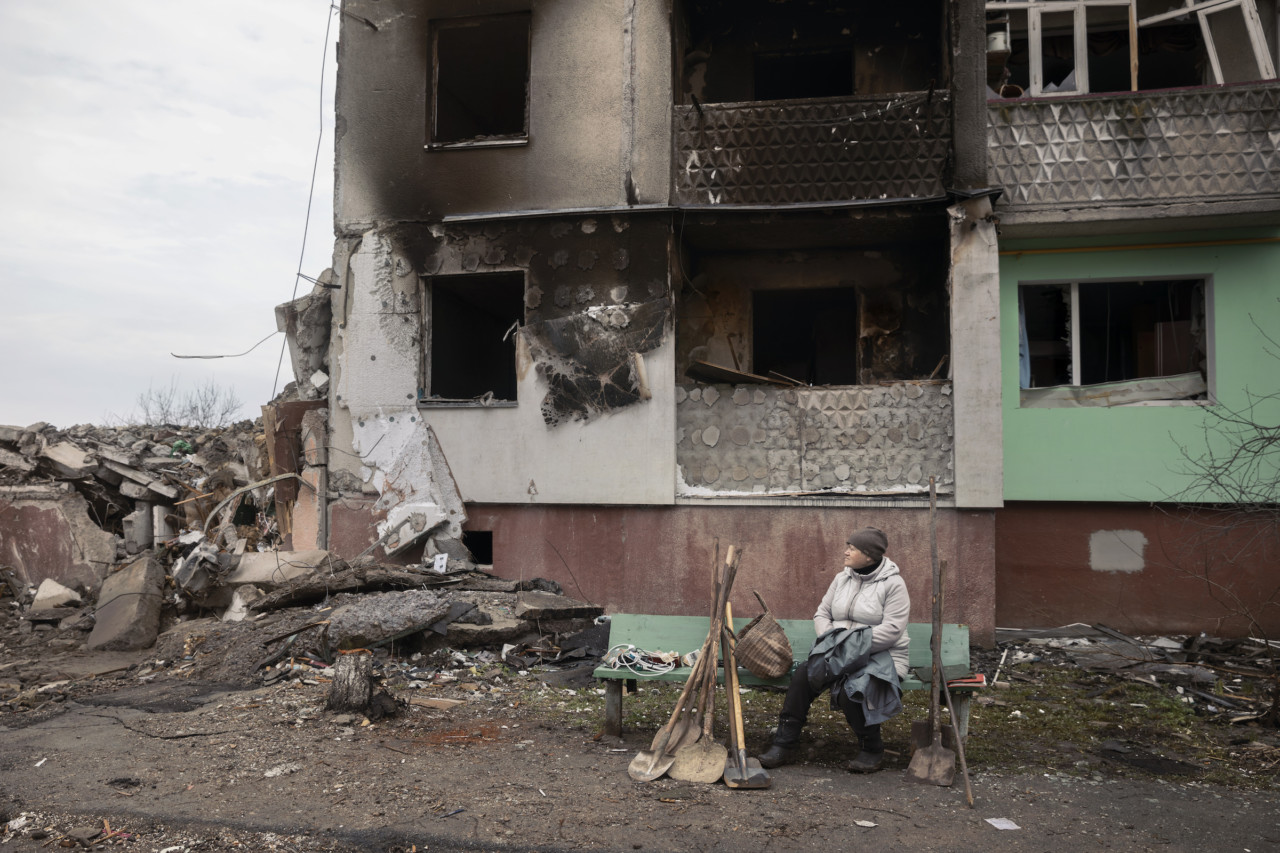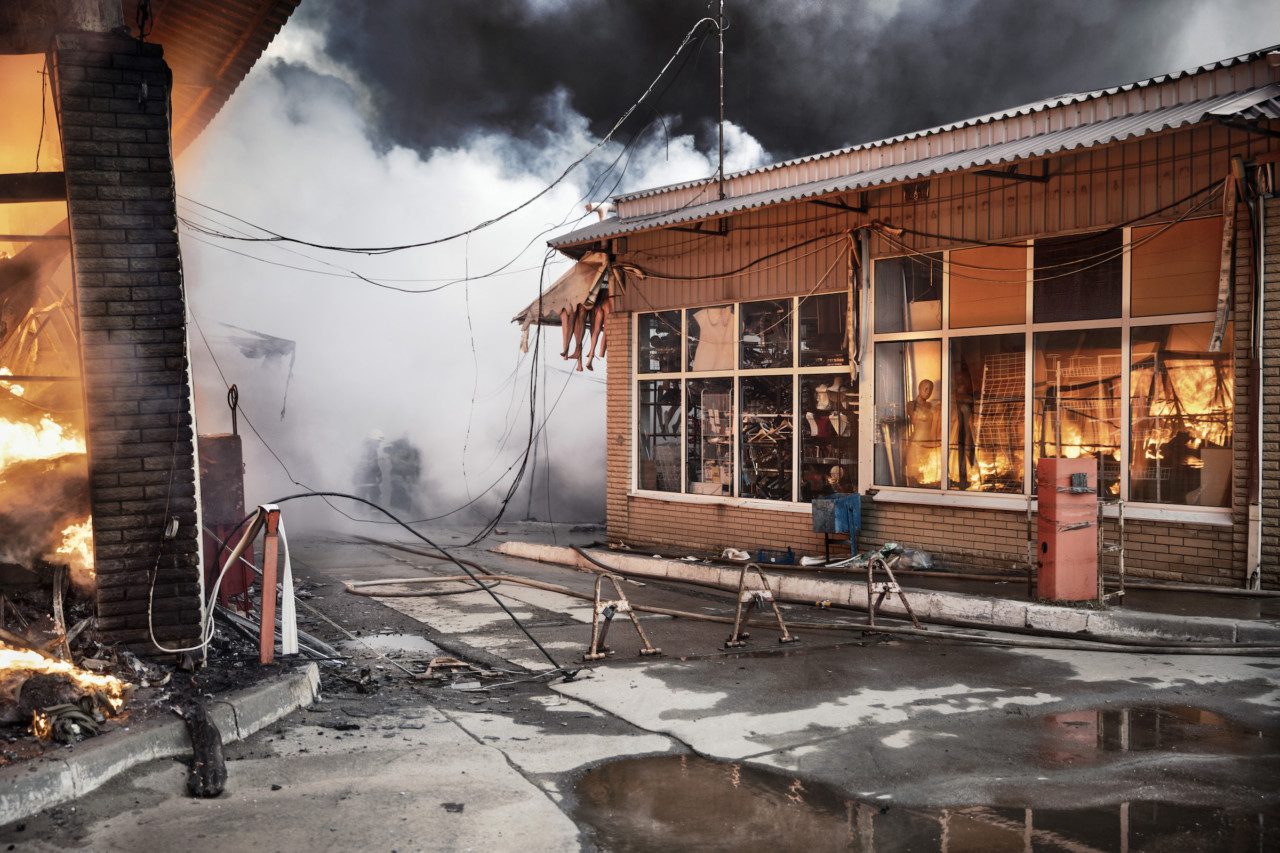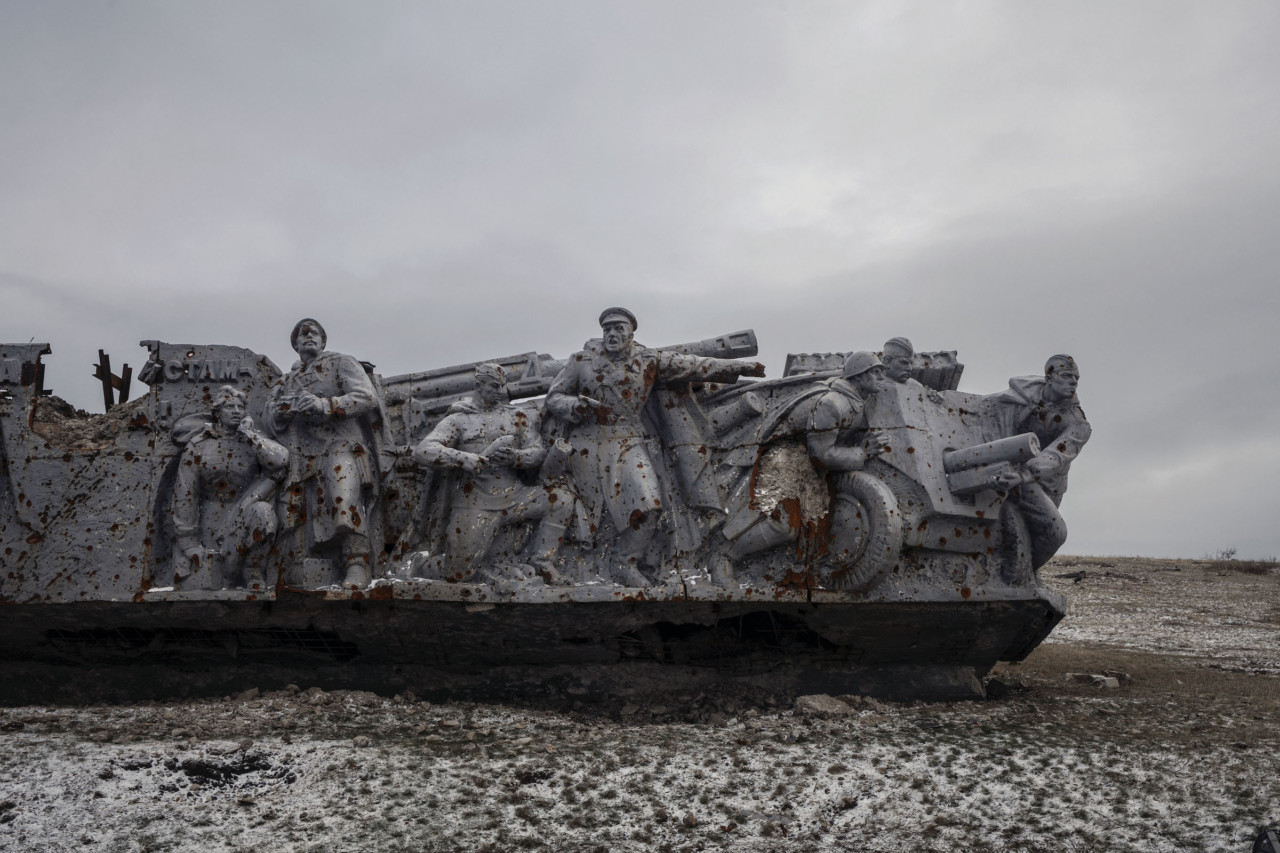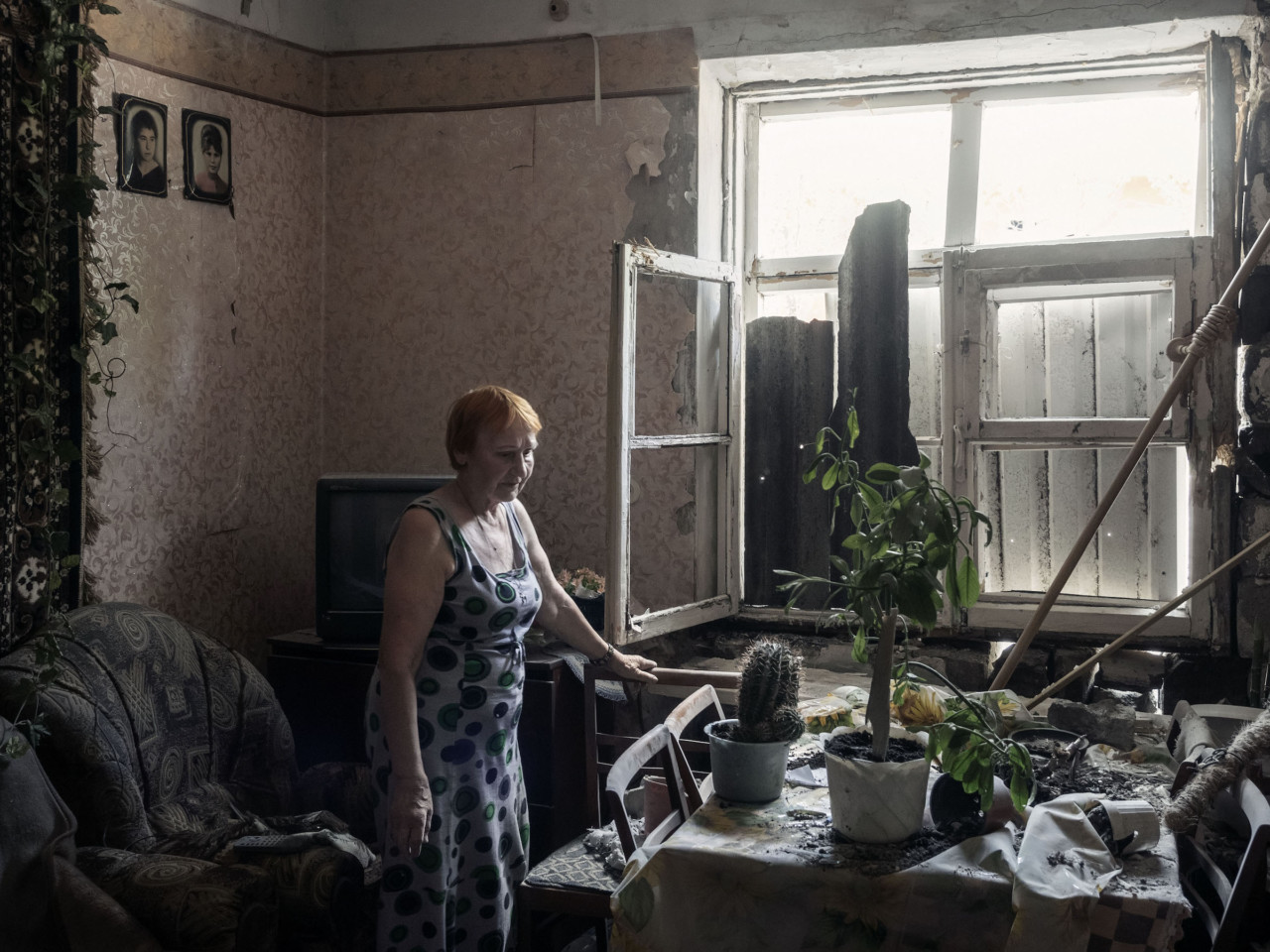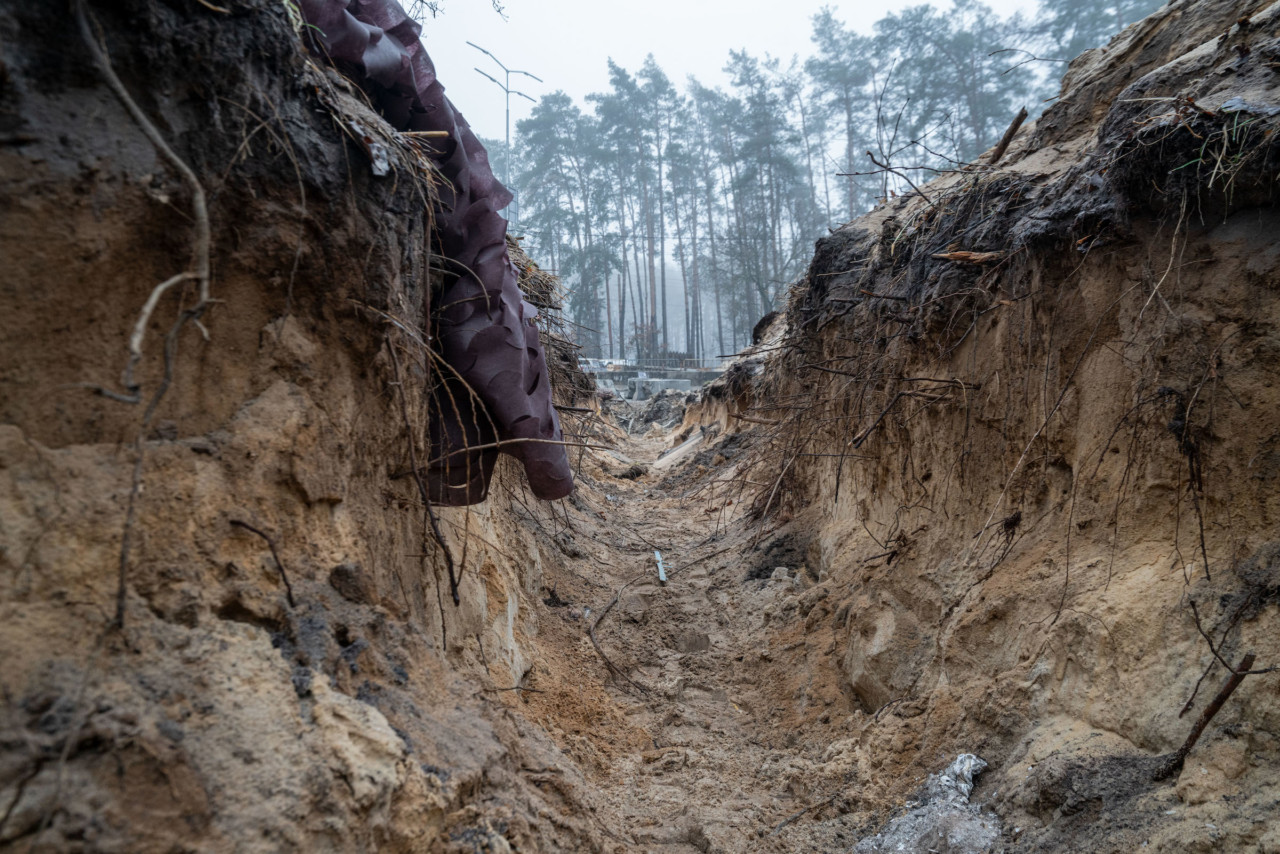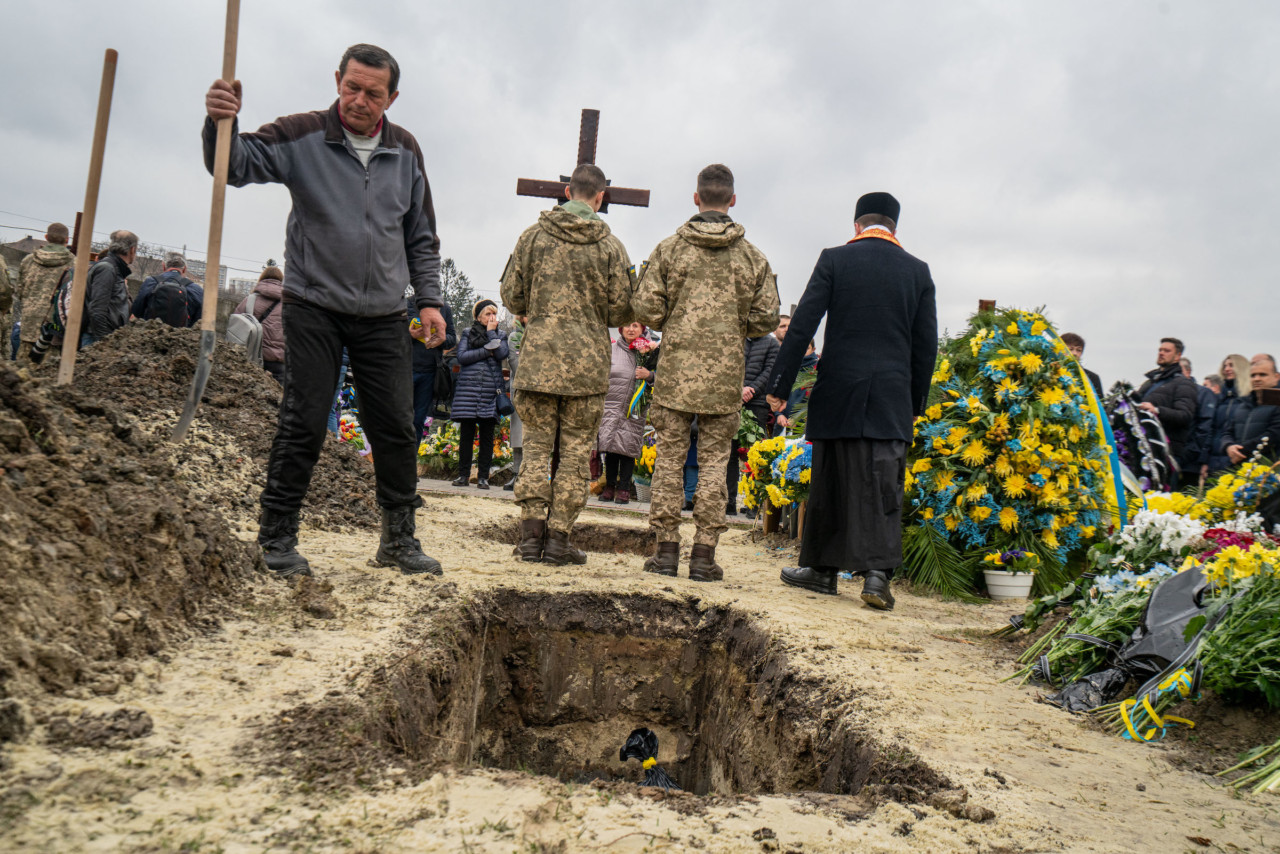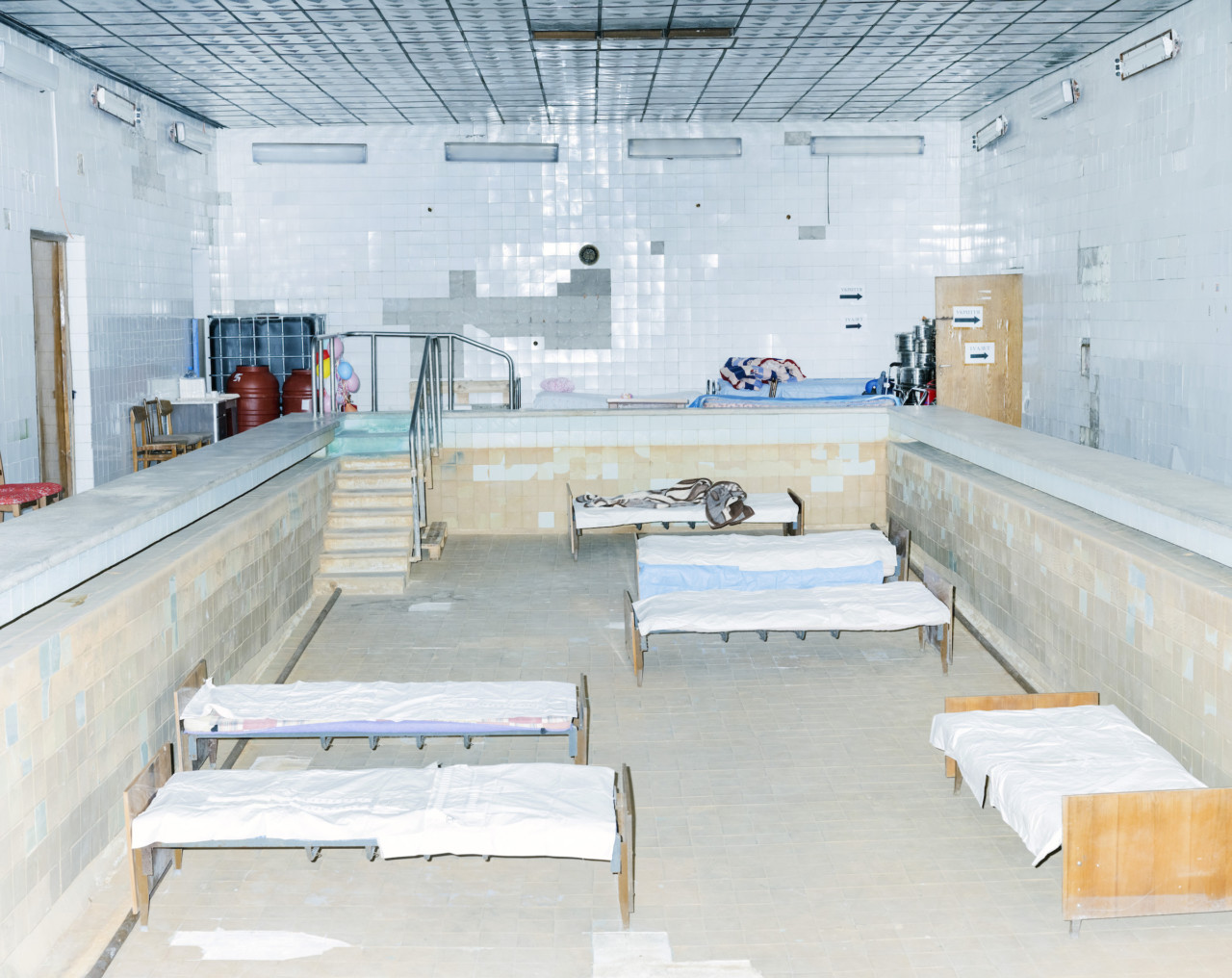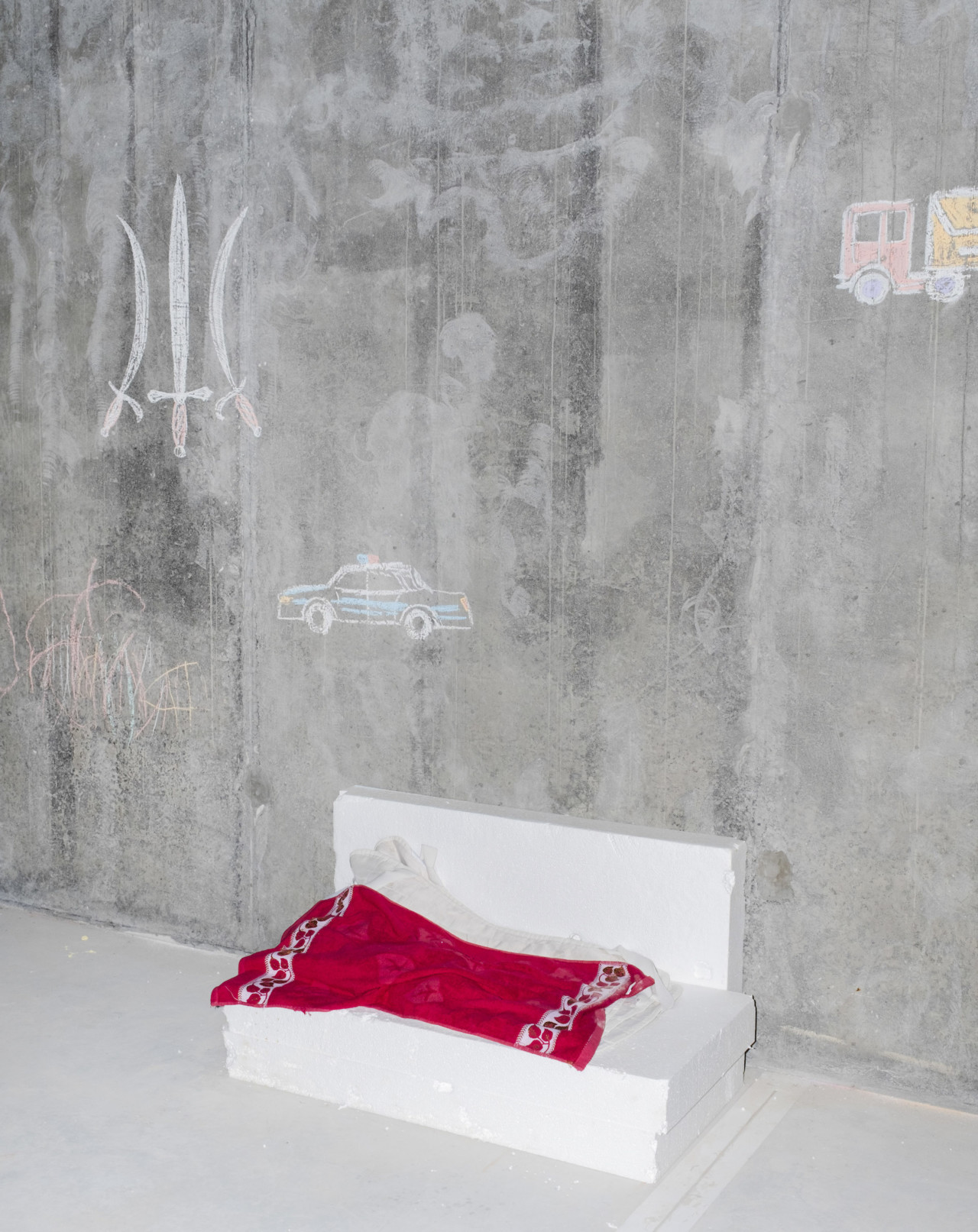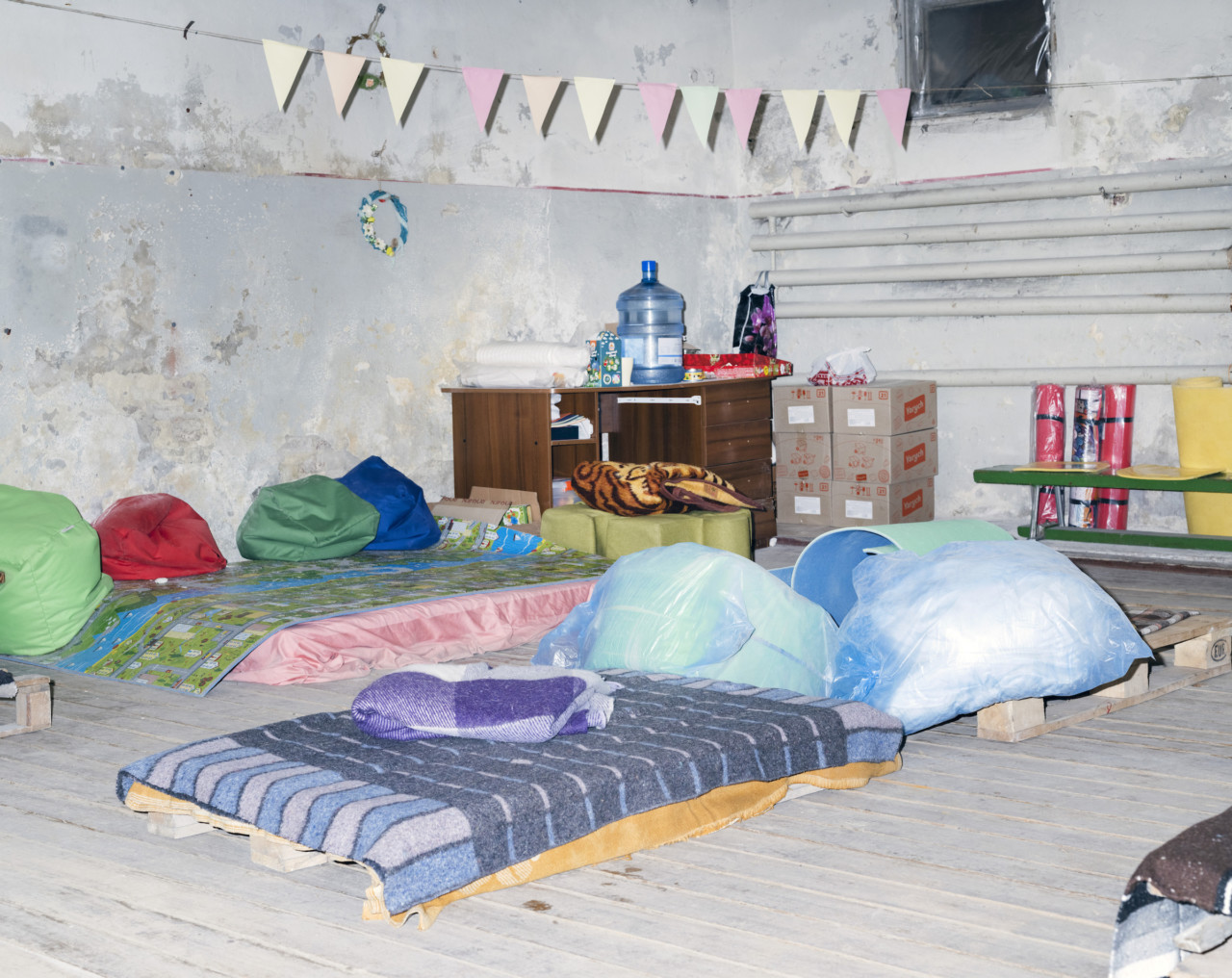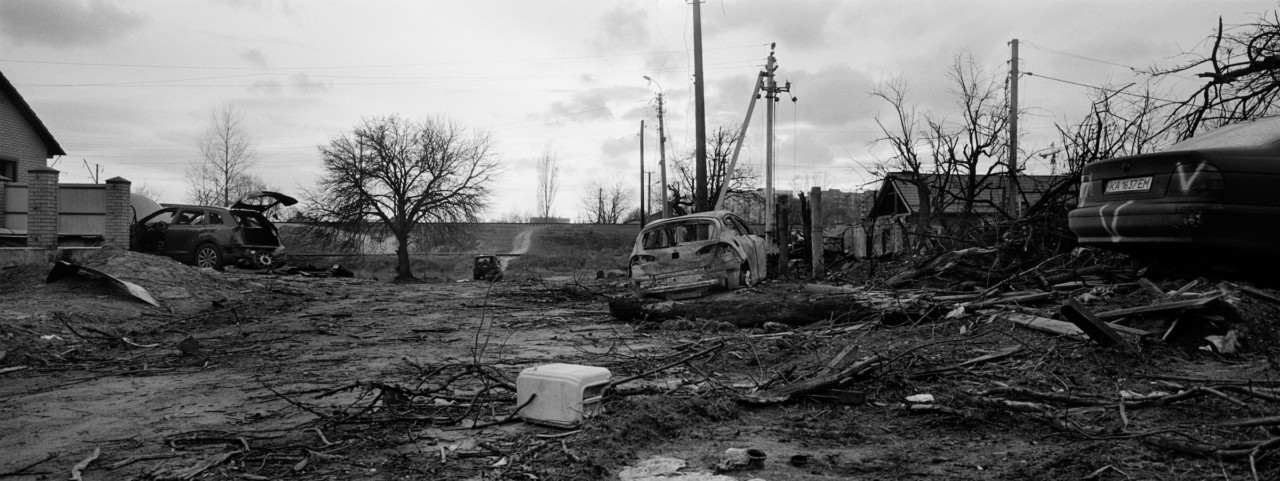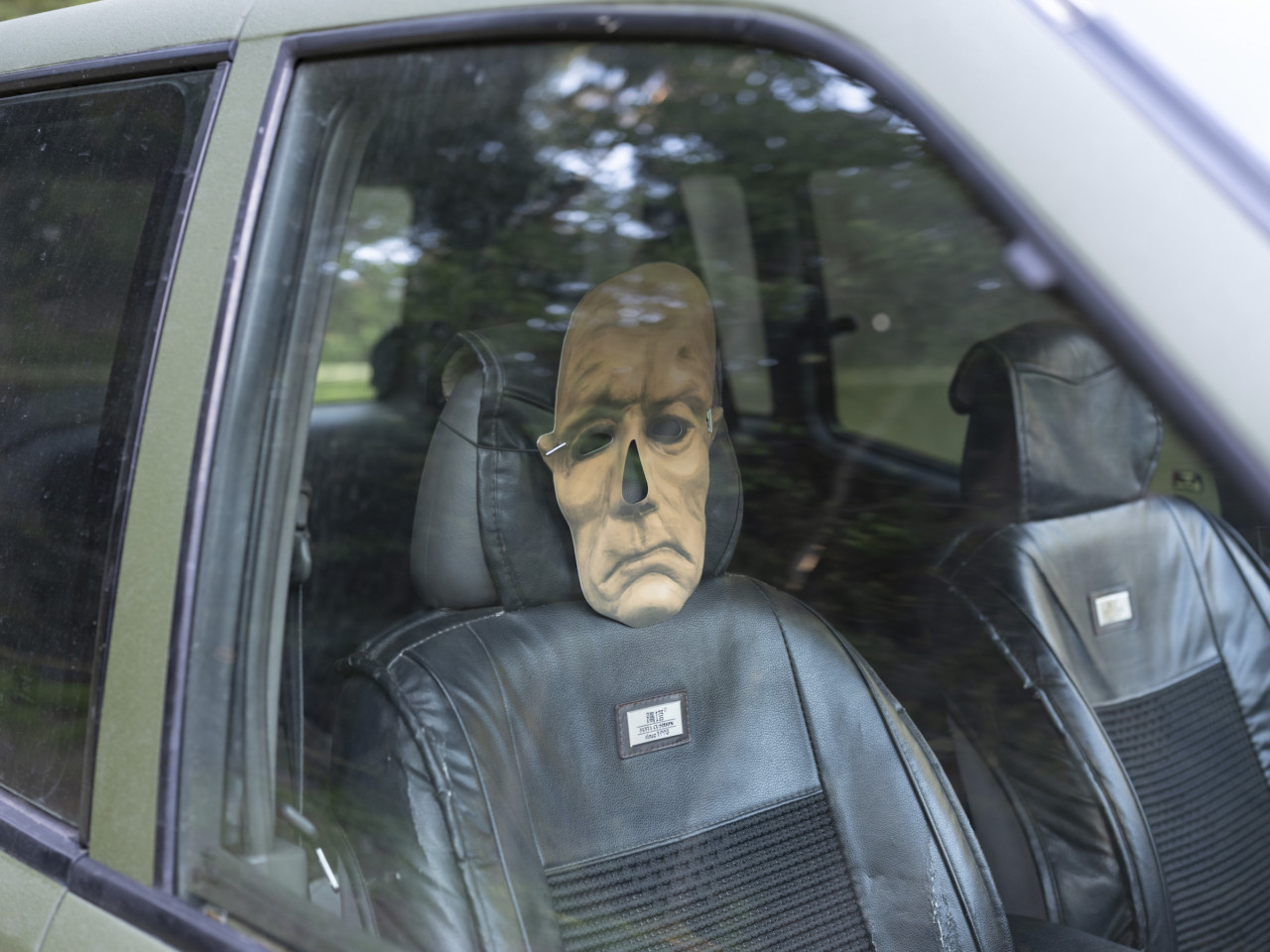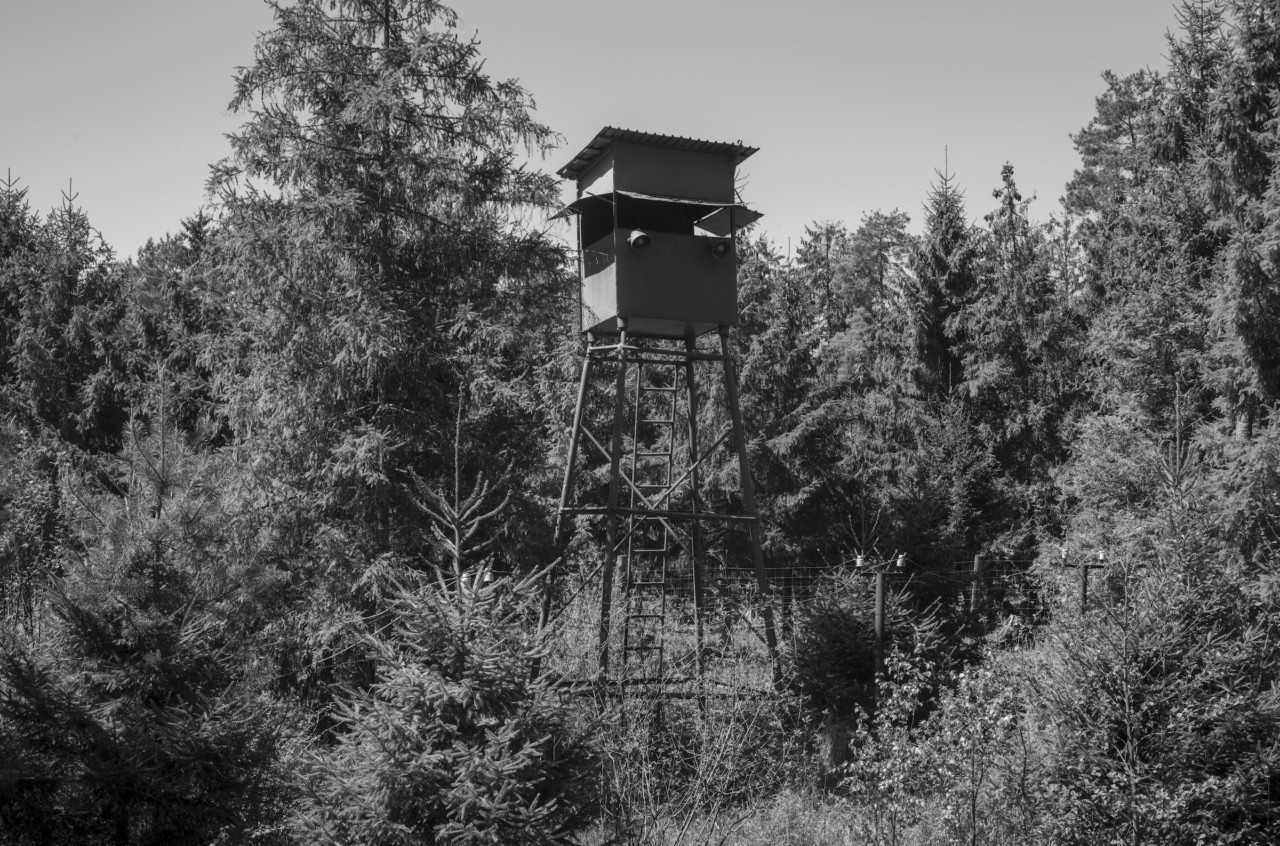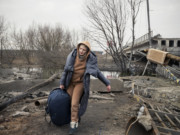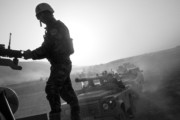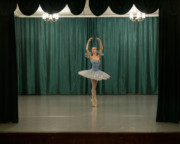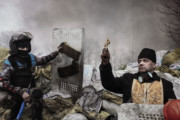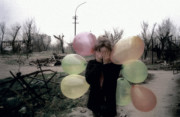A Year in Ukraine
Twelve months on from Russia's invasion of Ukraine, Liza Premiyak talks to some of the many Magnum photographers who have covered the ongoing conflict about the challenges of documenting war and its aftermath.
In war, a frontline is not just a battlefield. It can provide a certain degree of security or predictability; a measurement demarking the line of conflict, to be defended by opposing forces, and avoided by almost all others. However, the reality of modern conflict is that the line of separation is ever-changing, or may not exist at all.
Speaking ahead of the one-year anniversary of the invasion of Ukraine on February 24, a recurring theme emerged in my conversations with some of the 16 Magnum photographers who have visited the region this past year — the unpredictability of constant danger.
Russia’s assault by land, air and sea has devastated any semblance of safety. Violence can be very sudden and very extreme, leaving civilians vulnerable to attack at any time. The camera has only one function in moments of fear — to freeze them.
One image that captures the raw emotion of civilians caught in the crossfire is Jérôme Sessini’s photograph of a family fleeing Irpin, one of the towns northwest of Kyiv, where Russian forces launched several attacks in their unsuccessful advance on the capital during the first weeks of the invasion.
Sessini’s photograph captures a terrifying moment during the evacuation, as fighting rages on and civilian’s attempt to flee as Russian mortars rain down. The family falls to the ground, their expressions contorted with fear and desperation. The camera angle is low, at the same level as the family, drawing us into the scene.
"Getting to the frontline wasn’t my priority. I like to stay at the human level."
-
Sessini’s photograph may be less overtly gruesome than many of the images of death and destruction that we’ve since witnessed from photographs of liberated towns, yet it is difficult to remain unaffected by the sight of a helpless child in the grip of terror.
He arrived in Ukraine last March on assignment for The New Yorker. The magazine assisted the photographer by providing a security advisor for the last two weeks of his trip.
“The Russians were bombing the capital and there was nowhere to escape. [The New Yorker] asked me to stay in a hotel with a basement, in protective attire.” The intensity of the conflict has made it a challenging assignment, even for more experienced photographers like Sessini, who has covered the fighting in Donbas in eastern Ukraine since 2014, not to mention his reportage of conflicts in places such as Iraq, Syria and Libya.
Back in 2014, when the Russo-Ukrainian War really began, following the invasion of Crimea and moves by Russian-backed separatists in the Donbas, there were a lot of restrictions on photographers, and security concerns made it difficult for journalists to access the frontlines. Many left as a result. But Sessini was one of the photographers who stayed, along with his Magnum colleague Larry Towell, attempting instead to get closer to the people caught up in the aftermath.
“Getting to the frontline wasn’t my priority,” Sessini says. “I like to stay at the human level. I photograph the people affected. I want to ask, ‘What are they suffering for?’”
For many at Magnum (and many others also), this is what distinguishes them from news photographers. It’s a common impulse to stay behind after the news agenda has moved on and the international media has departed; to delve into the stories of the people left behind. Most often, these stories are told as long-term projects pursued independently, or shot off the back of assignments.
"It’s everyday people that are the ones who lose everything in a matter of minutes."
-
Following the Euromaidan protests and the so-called Revolution of Dignity in 2014 and the ousting of Russian-backed president, Viktor Yanukovych, Sessini traveled to eastern Ukraine to photograph Russia’s seizure of Crimea and the armed conflict that had erupted in the Donbas.
He says it was immediately obvious to him that there was a longer, more complex story for him to tell than his work as a visual journalist. And eventually, this work was made into a book, Inner Disorder, published by Editorial RM in 2022, which collects his personal accounts from a three-year period (2014–17) in Ukraine, alongside his personal recollections.
“It doesn’t matter which side of the conflict I’m on,” he says. “It’s everyday people that are the ones who lose everything in a matter of minutes; the people who don’t have the means to leave the country.” These photographs are important for giving us a view into what war in Ukraine has been like for those who have been living with it since the very beginning, nine years ago.
Larry Towell, a veteran of conflicts in Palestine, Nicaragua, El Salvador and Afghanistan, recalls the restrictions he faced while photographing in Maidan Square alongside Sessini. “I’d never experienced a war like this before, where photos and satellites were used to target infrastructure,” laments Towell.
Today, photos can quickly be geo-located to reveal sensitive information, such as the location of military units, equipment and installations. Analysts can use features of the images, such as buildings, trees or other landmarks, to compare them with satellite imagery on platforms like Google Maps. This trend has gained popularity with the emergence of open-source intelligence (OSINT) and the accessibility of satellite imagery and social media platforms.
“You were not allowed to photograph the military, and I was not about to photograph civilian installations. I couldn’t even photograph the Maidan caltrops that were set up to defend against tanks. It was a difficult environment to work in.”
Security concerns have magnified since Russia’s invasion, making military access near enough impossible for photojournalists. On his visit to Ukraine in March 2022, Towell spent 19 days documenting the conflict, including the former battlegrounds of the towns outside Kyiv, including Bucha, Irpin, Hostomel, Vorzel and Borodyanka. “There was one time that I got to the frontline. The whole area was like an ant hill, joined together by trenches that soldiers walked [besides] so they could drop down at any moment.
“I had the camera down all the time because I had an agreement that I could only shoot down inside the trenches. [The military] were fine with that, even though they were still quite nervous about everything.” The photographer attempted to approach the frontline in the same way he approached the barricades at Maidan, sharing how people maintain and rebuild the infrastructure.
However, there are occasions when photographers are not just tolerated, they are welcome. “At public events such as military funerals, you’re expected to be there, so long as you’ve got your press card. And they’re glad that you are.”
A Magnum photographer from neighboring Poland, Rafał Milach, is driven by a sense of close proximity to the conflict. Yet his work on the war in Ukraine demonstrates that it is not always necessary to get close up to the conflict to show its fallout.
His work is a reminder that war is not as distant as it may seem — it can happen anywhere and encroach upon even the most ordinary settings. He started taking photographs on the day of the invasion, documenting the shell-shocked Ukrainians arriving at Poland’s border control. It was during his visit to western Ukraine that he redirected his focus away from human suffering onto spaces that are recognizable to us, found in our own neighborhoods.
"This could be your parking lot, your public swimming pool, your hospital."
-
“When I [crossed the border to go] to Lviv in March 2022, I was interested in the spaces and the architecture and how they shifted during the war-time invasion.”
One of his vivid memories was visiting an underground swimming pool that had been converted into an oncological hospital. Suddenly, an alarm sounded, and patients — including children fighting for their lives — were forced to take cover in the basement. Milach was struck by the heartbreaking sight of mothers struggling to care for their sick children in cramped, uncomfortable conditions. But he purposefully left people out of his picture frame, instead relying on the familiarity of these spaces to spark empathy.
By focusing on the spaces and structures themselves, Milach’s images become a record of the impact of war, rather than the documentation of a particular event. “This could be your parking lot, your public swimming pool, your hospital,” he says.
Both Milach and Towell capture the effects of war on the built environment, but in different ways. While Milach documents how spaces are repurposed for survival, Towell’s work shows the trail of human loss and devastation left in liberated towns like Bucha. Neither were working on assignments, and so could capture how daily life continues for everyday people, without the demands of the news cycle and its focus on troop advancements and casualties and press conferences.
“I don’t usually do hard news. I almost never have assignments. So I have to think a little differently,” admits Towell. So, what compels a Magnum photographer to document conflict? “I photograph for history,” he continues, adding that this is particularly relevant in a country like Ukraine, which has been forced to forget the history of its own suffering.
For more than five decades, the Soviet regime forbade discussion of the origins of Holodomor, a man-made famine in Soviet Ukraine that resulted in millions of deaths (estimates range from 2.5–7.5m) in the early 1930s. Holodomor denial had been so deeply ingrained in Soviet society that, even after Ukraine gained independence in 1991, it took more than a decade for the government to officially recognize it as an act of genocide.
The harrowing scenes of mass graves witnessed by Towell in the liberated towns and villages around Kyiv were published in Vanity Fair several months later, alongside war reportage from Bucha by human rights advisor and investigator Janine Di Giovanni, titled, ‘Holding Russia to Account for War Crimes in Ukraine.’
The article shares her work on The Reckoning Project, an initiative training local journalists to meticulously gather evidence of war crimes while war rages on, so that eyewitness testimony can eventually be used in international tribunals. Her hope is to speed up the process to make Russia accountable for its brutal war on Ukraine. Gathering evidence is more important than ever. She writes: “The question of whether this war constitutes a genocide will be decided in the months and years to come. But history isn’t waiting this time.”
In the photographs of Towell and Milach, the spaces themselves become a collective protagonist: bringing attention to the scale of destruction without resorting to the sensationalism of human suffering seen in typical war reportage. However, these photographs don’t capture everything, as they don’t show the human need to distance oneself from the horrors of war.
“I noticed that the Ukrainian army very quickly cleaned up the dead bodies, the burnt-out tanks and memories on Highway 40. All the horrible things that were scattered up and down the streets of Bucha were gone, and gone quickly,” says Towell. “I think that stayed with me more than anything.”
Sometimes it’s the moments of normalcy in these spaces that can be shocking to witness. In January 2023, Milach made a trip to the Pozniaky district, which was one of the first residential areas of Kyiv to have been attacked by Russia in the first days of war. The photographs show a neighborhood blanketed by snow. Milach then went on to Hostomel, a destroyed residential district northwest of Kyiv, where he interviewed the residents who had returned to their apartments and renovated the spaces.
“That was one of the hardest experiences during that trip: being shown the pictures of how the flat was damaged, and hearing all the stories of what happened there. I really admire this mindset of not letting the perpetrator break you.”
As Russia’s offensive in Ukraine persists, photographers continue to bear witness to the way life persists and adapts amidst the conflict, capturing images of memorials and the myriad ways in which daily life interweaves itself within the ruins of war.
Jim Goldberg’s work focuses on the omnipresence of war in daily life — even in locations far from the conflict zone. In 2022, he traveled to Lithuania, a country with a Soviet past that sits at the crossroads between Europe, Belarus, and the Russian exclave of Kaliningrad.
In a border town called Kybartai he photographed a local resident who explained that after the Russian invasion of Ukraine, she had become more sensitive to the usual noises, like the sound of the railway. She is now fearful of any loud sound in general. Many people he met had been affected by the Soviet occupation, and these anxieties have only been compounded by the NATO military buildup and tensions over transportation of goods through Lithuania, which has caused long-dormant tensions over Kaliningrad to erupt, further straining relations between Russia and the West.
"Suddenly, you’ve got this fence going up amid these idyllic scenes, overpowering the landscape."
-
In recent years, Lithuania has faced an influx of migrants on its border, with thousands arriving since 2019, reportedly pushed by Russia’s ally, Belarus, as a provocation. EU officials and human rights organizations believe this humanitarian crisis was intentionally escalated by Belarusian President, Alexander Lukashenko, as retaliation for the EU’s support of his opposition. Last August, Lithuania announced that it had finished building a fence along its border with Belarus to restrict illegal immigration.
Goldberg speaks of its incongruity within the landscapes he photographed: “There’s a peacefulness to Lithuania. It really is a beautiful country. You’ve got rolling hills, lakes, and animals grazing. Then suddenly, you’ve got this fence going up amid these idyllic scenes, overpowering the landscape.”
When I look at Goldberg’s images of migrants who have fled the Africa, the Middle East and the Indian subcontinent, and are now stuck in limbo at detention centers on Lithuania’s border, I am reminded of Jérôme Sessini’s photographs showing victims of the Malaysia Airlines Flight 17 tragedy, which was brought down by a surface-to-air missile in eastern Ukraine in 2014. The incident killed 298 passengers who had no knowledge or connection to the war in Donbas, but were tragically affected by it. Both sets of images demonstrate how war and conflict can have far-reaching and unpredictable consequences, affecting innocent people who have no direct involvement in the conflicts they are caught up in.
The 24-hour news cycle bombards us with images of tragedies across the world, so much that we may forget that each of these photographs can also offer a moment of pause. Anniversaries give us this chance to commemorate what has been lost and ask what we can do next to support those still affected by war. Larry Towell believes that they offer a way to preserve the memory of past events and establish connections to the present.
He asks, “Why do we have birthdays? Why do you have founding anniversaries? To remind you that something important has happened and is happening.” Consequently, anniversaries are a moment to consider how Ukrainian refugees have been resettled, the intensification of anxieties in border regions, and the best approach to commemorate what has been lost while celebrating the lives that continue to thrive.



